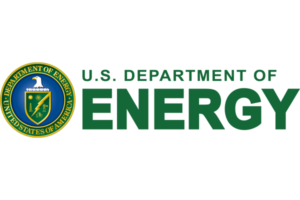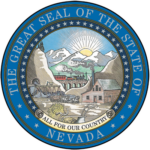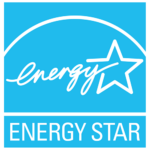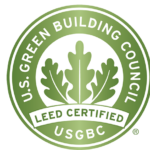Guide to Commercial Lighting Standards
(continued)
As discussed in our first “Lighting Standards” article, the guidelines for commercial lighting in the United States are primarily governed by the Department of Energy (DOE) and the Illuminating Engineering Society of North America (IESNA). These organizations establish guidelines and regulations aimed at promoting energy efficiency and providing quality lighting in commercial buildings. Here are some key standards and regulations related to commercial lighting in the US:
 Energy Codes: The DOE has set energy codes that establish minimum requirements for energy-efficient lighting in commercial buildings. The most widely adopted energy code is the International Energy Conservation Code (IECC), which specifies lighting power allowances, lighting controls, and other requirements for different types of spaces.
Energy Codes: The DOE has set energy codes that establish minimum requirements for energy-efficient lighting in commercial buildings. The most widely adopted energy code is the International Energy Conservation Code (IECC), which specifies lighting power allowances, lighting controls, and other requirements for different types of spaces.
 Lighting Efficiency Standards: The DOE also sets energy efficiency standards for various lighting products and equipment. This includes standards for lamps (such as incandescent, fluorescent, and LED lamps), luminaires (light fixtures), and lighting controls. These standards dictate the maximum allowable energy consumption and other performance criteria for lighting products.
Lighting Efficiency Standards: The DOE also sets energy efficiency standards for various lighting products and equipment. This includes standards for lamps (such as incandescent, fluorescent, and LED lamps), luminaires (light fixtures), and lighting controls. These standards dictate the maximum allowable energy consumption and other performance criteria for lighting products.

Design Guidelines: The Illuminating Engineering Society of North America (IESNA) publishes lighting design guidelines and standards to ensure high-quality lighting in commercial spaces. The most widely used publication is the IES Lighting Handbook, which provides comprehensive information on lighting design practices, illuminance levels, glare control, lighting calculations, and other technical aspects.
 Lighting Controls: Lighting control systems play a crucial role in energy management and enhancing occupant comfort. The DOE and various state energy codes require the use of lighting controls such as occupancy sensors, daylight sensors, time scheduling, and dimming capabilities to optimize energy efficiency and reduce wastage in commercial buildings.
Lighting Controls: Lighting control systems play a crucial role in energy management and enhancing occupant comfort. The DOE and various state energy codes require the use of lighting controls such as occupancy sensors, daylight sensors, time scheduling, and dimming capabilities to optimize energy efficiency and reduce wastage in commercial buildings.
 ENERGY STAR: The ENERGY STAR program, administered by the Environmental Protection Agency (EPA), certifies energy-efficient lighting products that meet specific performance criteria. Although under a limited number of product classifications, EPA encourages building owners/operators to consider lighting design as part of the overall building system and offers ENERGY STAR Portfolio Manager energystar.gov/benchmark. This benchmark is used as a means for tracking and evaluating the impact of energy efficiency improvements – including lighting upgrades on building performance over time.
ENERGY STAR: The ENERGY STAR program, administered by the Environmental Protection Agency (EPA), certifies energy-efficient lighting products that meet specific performance criteria. Although under a limited number of product classifications, EPA encourages building owners/operators to consider lighting design as part of the overall building system and offers ENERGY STAR Portfolio Manager energystar.gov/benchmark. This benchmark is used as a means for tracking and evaluating the impact of energy efficiency improvements – including lighting upgrades on building performance over time.
 Voluntary Programs: Various voluntary programs and certifications exist to promote energy-efficient and sustainable lighting practices in commercial buildings. Examples include the U.S. Green Building Council’s Leadership in Energy and Environmental Design (LEED) certification, which includes lighting-related credits, and the Lighting Design Lab’s Commercial Lighting Solutions program.
Voluntary Programs: Various voluntary programs and certifications exist to promote energy-efficient and sustainable lighting practices in commercial buildings. Examples include the U.S. Green Building Council’s Leadership in Energy and Environmental Design (LEED) certification, which includes lighting-related credits, and the Lighting Design Lab’s Commercial Lighting Solutions program.
 It’s important to note that specific lighting requirements and standards can vary between states, municipalities, and building types. Local building codes and regulations may impose additional requirements or modifications to the national standards. Therefore, it’s advisable to consult with commercial lighting professionals such as Commercial Lighting Specialties in designing or retrofitting commercial lighting systems. Please contact us below or use this link
It’s important to note that specific lighting requirements and standards can vary between states, municipalities, and building types. Local building codes and regulations may impose additional requirements or modifications to the national standards. Therefore, it’s advisable to consult with commercial lighting professionals such as Commercial Lighting Specialties in designing or retrofitting commercial lighting systems. Please contact us below or use this link

